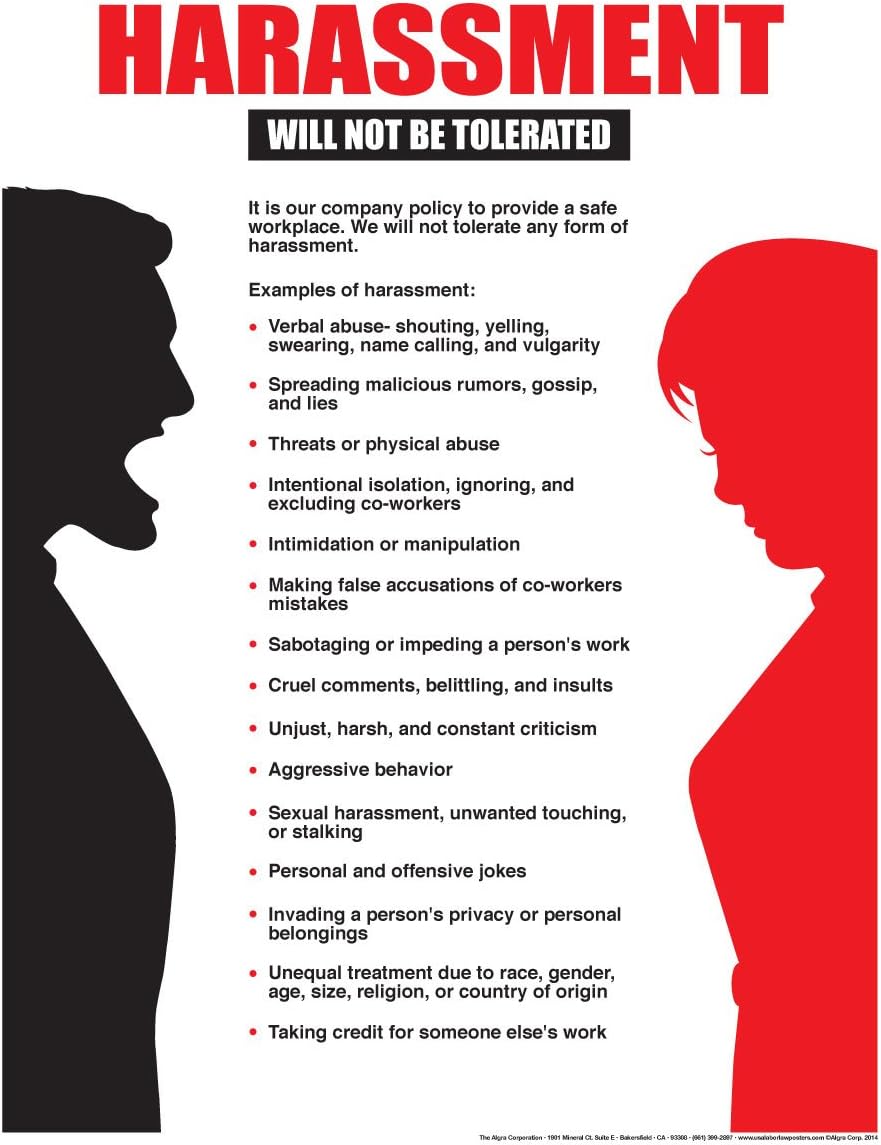harassment refers to any unwelcome or offensive behavior that occurs in a professional setting, which creates a hostile, intimidating, or uncomfortable work environment for an individual or a group of individuals. It involves actions, comments, or conduct that targets a person based on their race, color, religion, sex, national origin, age, disability, or any other protected characteristic.
There are several different types of workplace harassment, including
Sexual Harassment
This type of harassment involves unwanted sexual advances, requests for sexual favors, or any other verbal, non-verbal, or physical conduct of a sexual nature. It can include inappropriate comments, gestures, jokes, or even sexual assault.
Discriminatory Harassment
This type of harassment occurs when an individual is targeted based on their protected characteristic, such as their race, gender, religion, or disability. It can involve offensive remarks, derogatory jokes, or exclusion from work-related activities.
Bullying
Workplace bullying refers to repeated, unreasonable actions that are intended to intimidate, degrade, or humiliate an individual. It can include verbal abuse, spreading rumors, sabotaging work, or isolating a person from their colleagues.
Psychological Harassment
Also known as emotional or mental harassment, this type of harassment involves actions that cause emotional distress or harm to an individual. It can include constant criticism, belittling, or humiliating behavior.
Cyber Harassment
With the rise of technology, workplace harassment can also occur through electronic means. Cyber harassment involves using emails, social media platforms, or other digital channels to harass, intimidate, or threaten an individual.
Retaliation
Retaliation occurs when an individual faces adverse actions or treatment as a result of reporting or opposing harassment. It can include demotion, termination, or any other form of punishment.
It is important for organizations to have clear policies and procedures in place to prevent and address workplace harassment. Employers should provide training to employees, establish reporting mechanisms, and take prompt action to investigate and address any complaints of harassment.
